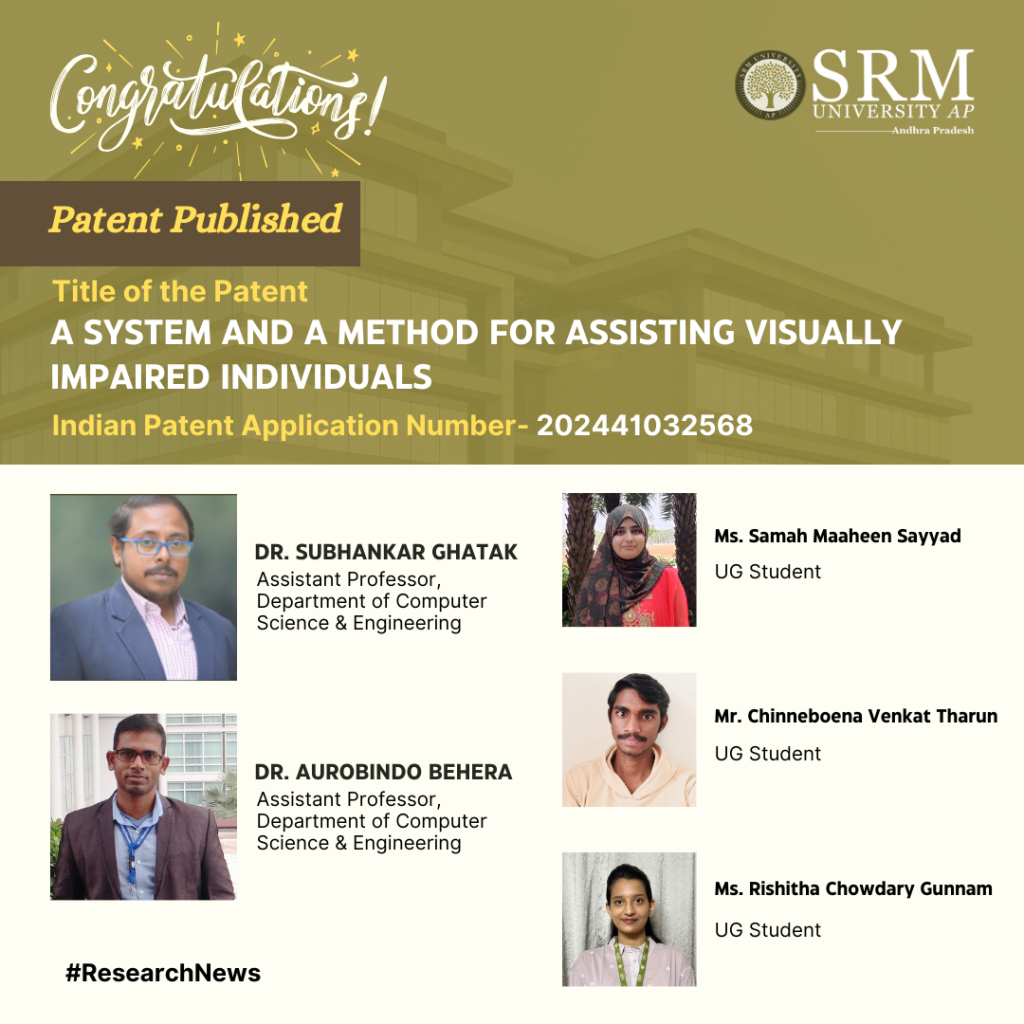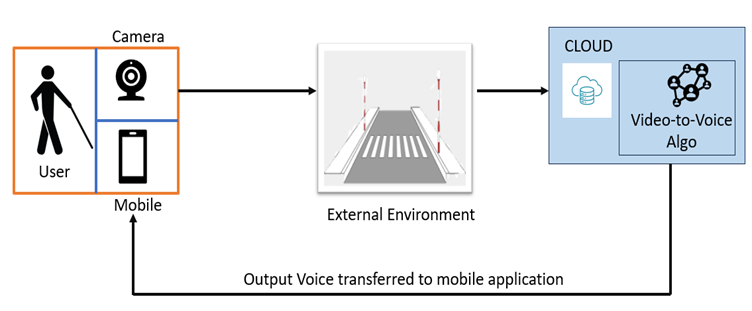
A dedicated team of researchers and professors have developed an innovative patent titled “System and a Method for Assisting Visually Impaired Individuals” that uses cutting-edge technology to significantly improve the navigation experience for visually impaired individuals, fostering greater independence and safety.
The team, comprising Dr Subhankar Ghatak and Dr Aurobindo Behera, Assistant Professors from the Department of Computer Science and Engineering, and students Ms Samah Maaheen Sayyad, Mr Chinneboena Venkat Tharun, and Ms Rishitha Chowdary Gunnam, has designed a system that transforms real-time visual data into vocals via a mobile app. It will utilise wearable cameras, cloud processing, computer vision, and deep learning algorithms. Their solution captures visual information and processes it on the cloud, delivering relevant auditory prompts to users.
Abstract
This patent proposes a novel solution entitled, “System and a method for assisting visually impaired individuals aimed at easing navigation for visually impaired individuals. It integrates cloud technology, computer vision algorithms, and Deep Learning Algorithms to convert real-time visual data into vocal cues delivered through a mobile app. The system
employs wearable cameras to capture visual information, processes it on the cloud, and deliver relevant auditory prompts to aid navigation, enhancing spatial awareness and safety for visually impaired users.
Practical implementation/Social implications of the research
The practical implementation of our research involves several key components. Firstly, we need to develop or optimise wearable camera devices that are comfortable and subtle for visually impaired individuals to wear. These cameras should be capable of capturing high-quality real-time visual data. Secondly, we require a robust cloud infrastructure capable of processing this data quickly and efficiently using advanced computer vision algorithms and Deep Learning Algorithms. Lastly, we need to design and develop a user-friendly mobile application that delivers the processed visual information as vocal cues in real-time. This application should be intuitive, customisable, and accessible to visually impaired users.
The social implications of implementing this research are significant. By providing visually impaired individuals with a reliable and efficient navigation aid, we can greatly enhance their independence and quality of life. Navigating city environments can be challenging and hazardous for the visually impaired, leading to increased dependency and reduced mobility. Our solution aims to mitigate these challenges by empowering users to navigate confidently and autonomously. This fosters a more inclusive society where individuals with visual impairments can participate actively in urban mobility, employment, and social activities.

In the future, we plan to further enhance and refine our technology to better serve the needs of visually impaired individuals. This includes improving the accuracy and reliability of object recognition and scene understanding algorithms to provide more detailed and contextually relevant vocal cues. Additionally, we aim to explore novel sensor technologies and integration methods to expand the capabilities of our system, such as incorporating haptic feedback for enhanced spatial awareness.
Furthermore, we intend to conduct extensive user testing and feedback sessions to iteratively improve the usability and effectiveness of our solution. This user-centric approach will ensure that our technology meets the diverse needs and preferences of visually impaired users in various real-world scenarios.
Moreover, we are committed to collaborating with stakeholders, including advocacy groups, healthcare professionals, and technology companies, to promote the adoption and dissemination of our technology on a larger scale. By fostering partnerships and engaging with the community, we can maximize the positive impact of our research on the lives of visually impaired individuals worldwide.

